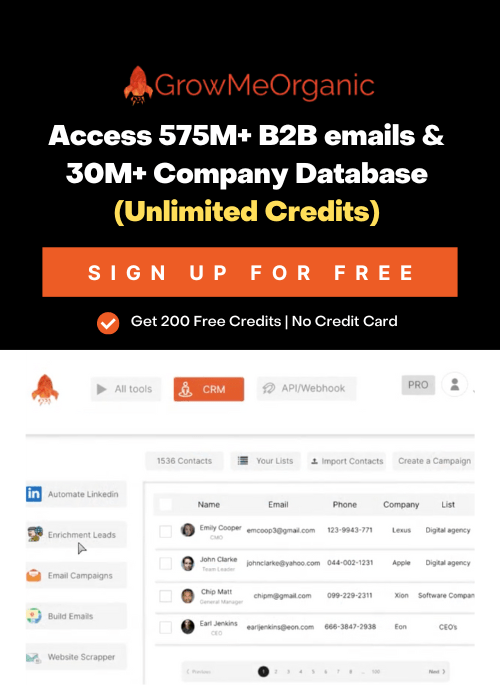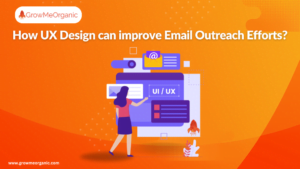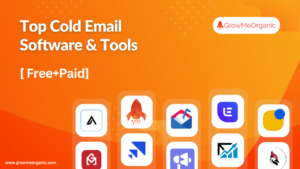Are you a SaaS business owner struggling with money going down the drain? The problem may lie in the ability to retain clients.
Suppose you’ve put all the effort into encouraging an unknown person to purchase the product or at least commit to a free trial. They’ve explored the software, and the time to renew the subscription comes, but… Nothing happens. They just go away.
If you notice such a problem more and more often, that’s a concerning sign. No matter how many leads you bring in, you need to nurture relationships with them like you would when planting a garden.
Why? The reason is that it takes much less to persuade a satisfied client to stay with you than to appeal to newcomers.
Retaining customers also provides a steady stream of income. Or at least you don’t bear losses. People who choose to stick around not only give their money to you.
With the right approach, you can make them brand evangelists who share a positive word of mouth in their social circle.
Does it seem persuading and intriguing? Well, let’s take a look at practical SaaS customer retention strategies. From onboarding to using feedback, let’s make sure you stay on your consumers’ top of mind.
Understanding SaaS Customer Retention: Definition and Its Significance
Customer retention denotes the process of making customers stay with a company. It may be buying products in a grocery store once a week or subscribing to a service in the SaaS realm. The bottom line is that people should be happy and see the value in your service.
A case in point is the website user experience. It should be seamless and positive, as it influences retention. To ensure it, you need to conduct a website user experience audit, identify areas for improvement, and enhance the overall customer interaction.
As SaaS businesses generally rely on the recurring model, i.e., getting revenue from regular renewals, customer retention guarantees their existence and prosperity.
To calculate the customer retention rate (the number of users who stayed with the brand), use the following formula:

Where:
- E = The number of customers at the end of a period (a week, month, quarter);
- N = New clients brought on during the period;
- S = The total number of clients at the beginning of the period.
Why is it so important to measure and improve this metric? Because retained customers are the foundation of a stable business. They will most likely test your new features, give unbiased feedback, and protect the brand reputation.
Now, let’s touch upon the battle of retention versus acquisition. Customer acquisition is no less essential for a growing company than retention. However, while acquisition is more like exploring new horizons, retention is like cultivating and enriching the land you possess. The first one is exciting and seems logical. The more clients you get, the more money this strategy will generate. Yet, statistics say it’s five to six times more expensive than engaging an existing user.
Plus, here are several other benefits of putting effort into retention:
- Lower marketing costs (satisfied existing customers can promote the company without you asking for it);
- Higher profit margins (once you’ve sold the basic package, you can offer additional features and upgrades to someone who trusts you);
- A valuable feedback loop (long-term customers understand the products better thanks to their extensive experience of using it; thus, they can give you in-depth analysis, helping refine offerings);
- Essential user behavior data (you can track what users need at further stages of exploring the product rather than focusing on initial hooks).
The Lifecycle Approach to Retention
When planning the retention strategy, you need to comprehend the path users take when getting to know the product. However, this journey isn’t always linear. It’s more like a cycle, different for each person. That’s why you need to adjust steps to retain a client at each stage, for example:
- Onboarding, or creating the first impression. Here, customers get to know the software, figuring out whether they’ve made the right choice to purchase it. Eliminate their doubts by developing a smooth onboarding process. Educate, offer helpful tips and tutorials, and show the quick wins.
- Engagement, or building the relationship. That’s where people get comfortable. The product brings value, but they still can opt-out without keeping them interested and engaged. Regular communication, personalization, and collecting feedback are key.
- Renewal, or keeping it going. The renewal stage is a point of making a decision: to be or not to be. If you highlight the benefits of choosing you and provide incentives to stay, you can make prolonging relationships more possible.
- Advocacy, or turning customers into fans. That’s the highest level of trust, engagement, and satisfaction. Here, users know why they buy from you, do it regularly, and tell others about it.
Reward these people. Whether it’s exclusive access to new features or discounts, it shows appreciation. Build a community. For example, you can set up a social media page where like-minded people can exchange opinions and feel part of something bigger.
Critical Metrics for Measuring Retention and How to Track Them
Apart from CRR, you also need to monitor churn rate and lifetime value (LTV). The churn rate is the opposite of retention. It’s the percentage of customers lost in a particular period. It’s inevitable. Someone will stop using the software. Here is how to calculate it:

Lifetime value (LTV) gives you an idea of how much revenue to expect from a user over the time of staying with you. A simple formula:

Let’s say your ARPU is $100, and the annual churn rate is 10%. The LTV would be $1000.
Tracking and Interpreting These Metrics
What can you do after measuring the churn rate and LTV? You need to employ the knowledge to make strategic decisions. Let’s take the churn rate as an example. To get a more comprehensive view of consumer behavior, monitor it regularly for a month, quarter, or year. It’ll allow you to spot patterns like certain periods when churn rises. Maybe it’s after a trial period ends or a major update?
Then, the audience is left into categories by industry, plan type, or usage level. Identify exact areas or audience groups where you’re doing it wrong. But numbers aren’t enough. Send surveys to such customers asking why they stopped using the software. You can even invite them for an exit interview to gain first-hand information.
Use churn data to inform your strategies. If the tool lacks certain features or the price is unreasonable, fix it.
As far as LTV is concerned, check what user segments have higher numbers. Do those who come from referrals or paid ads spend more money? Product changes can also impact LTV. Identify such cases. For instance, does introducing a new feature increase the LTV of a specific segment?
Strategic Framework for Retention
1. Enhancing Customer Onboarding: Personalization and Gamification
Onboarding is all about creating the “A-ha” experience when people understand the value of the service. Start with collecting the right information. Effective innovation process management during onboarding can streamline the introduction of new features, enhancing the overall user experience. Apply the job-to-be-done framework, which entails helping a person complete a particular job with the service. Think: What can it be? That’s where you can suggest taking a survey with the following questions:
- What kind of job does the user perform?
- What is their role?
- How large is their company?
- What are they looking for in this software?
Note: Be careful with overloading respondents with too many questions. Don’t create unnecessary friction.
Once you’ve got the JTBD data, personalize the onboarding experience. This technique is known as branching. Each user type gets the most relevant features and functionalities. It’s a strategic move that can significantly reduce the time to value and boost product adoption.
To make this time more exciting, leverage gamification. Add progress bars to checklists or include time estimates for task completion to keep users informed and motivated to explore your product. And don’t forget that onboarding is not only about new prospects. Educate existing ones to gain more value from the software with time. In this case, in-app messaging may help.
2. Innovative Engagement Techniques
Among such techniques are contextual communication and in-app assistance. Because you shouldn’t just offer products and features. You need to step in with information relevant to user needs and product usage.
Suppose a person’s account limit is approaching. If you want to communicate with them contextually, activate the “Upgrade” button right at the moment. As a result, this strategy looks more seamless and organic, not like a sales pitch. It’s more like a helpful suggestion.
In-app assistance covers triggering specific actions based on user behavior. Provide diverse resources like tutorials, webinars, and comprehensive courses and embed live customer support functionality within the app. For instance, a notification about an expiring credit card can prompt users to update their payment information, averting account access issues and potential churn.
3. Product Evolution and Customer Feedback
Customer retention is impossible without improvement. One of the best ways to learn where the product falls short is to ask users about it directly. Leverage Customer Satisfaction surveys with simple response mechanisms like emoticons or scales. Below, you can see such a survey from MonkeyLearn.

Find the best time slot to do it without bothering clients. For example, right after resolution may not be the best time. Why? Because a caller was already dissatisfied with the inability to do something. They’ve taken some steps to communicate with the support team and solve the problem. And now you’re sending them an email urging them to spend time writing feedback.
Act upon feedback, too, either by removing issues with the tool or rolling out new features. Frequent updates, additions, and enhancements demonstrate your dedication to meeting the users’ demands and preventing the churn that might result from boredom.
4. Optimizing the Pricing and Billing Experience
Pricing optimization entails balancing between value and profit. One of the biggest mistakes when doing that is hoping lower prices will retain users. In fact, a higher price may improve the product perception, encouraging people to stay. Because when you get more, you can give more regarding better customer experience, support, features, quality, etc.
If you want to provide more freedom to users, create a tiered pricing system. The more the plan costs, the more perks they receive. That’s what Slack practices by presenting four different packages.

Billing (or the way you request payment from clients) is another crucial thing. It should support the business and client goals. Here is what it means for the company:
- simplifying the process of making recurrent payments;
- matching the pricing strategy with the billing procedures;
- employing techniques like payment retries and dunning (reminders for due payments) to retain the audience.
Delve into audience analysis. Do people utilize the product without any interruptions? If their work is project-based, they may have some time without needing your tools. Consider whether they want to pay monthly or yearly, whether they’ll need to change subscription terms, and what kind of support they expect. After that, plan a subscription management model:
- Offer a pause option instead of cancellation.
- Don’t overcomplicate cancellations trying to retain clients. It won’t work. A smoother opt-out experience may make them more likely to come back later. Irritation with the complexity won’t.
- Give the consumer the reins to utilize their subscriptions as they see fit. Make it simple for them to upgrade, downgrade, or buy add-ons for their subscription package.
5. Proactive Customer Support
A person who sends a large number of tickets may indicate that they are actively using the product. On the other hand, if those tickets take a long time to close, or worse, if many remain unresolved, the client will hardly stick around.
How can providing great customer service effectively counter churn? Take the initiative. Recurring support tickets for the same issue or many unresolved tickets from a client are two trends to look out for.
Consider whether you can spot this problem to fix it more rapidly or avoid it from occurring in the first place. Reviewing SaaS customer support best practices can provide insights into optimizing support workflows and preventing common issues.
Note: It’s unnecessary for a customer support team to intervene whenever a person struggles with the software. Self-service resources like guides and chatbots may be enough to deal with a minor issue. This gives your team more time to address more complicated or critical inquiries via phone, email, or live chat.
6. Community Building and Rewards
To retain customers, they shouldn’t feel isolated. When fostering a community, you achieve several benefits:
- Clients can exchange tips on how they combat specific issues or how they utilize the tool to get the maximum out of it.
- They feel support from others and are more likely to stay.
- The company seems more personal and humane.
Create a space for the audience to connect, share tips, and offer feedback. It can be a forum or comments on the blog.
Launch a customer loyalty program to offer rewards for staying. Loyalty incentives don’t need to be expensive or difficult. A small discount, plan upgrade, or freebie (such as a free month of subscription or an upgraded plan) can go a long way toward encouraging continued loyalty. Also, consider launching a referral program to provide even more bonuses for bringing others to the company.
7. Data-Driven Decision-Making
Decision-making shouldn’t only rely on instincts. Back your feelings with real-life data collected through A/B testing and funnel analysis.
For funnel analysis, go through the stages that users follow to see where they drop off or face challenges. Test different approaches to improve their experience.
That’s where A/B testing can come in handy. It involves comparing the two versions of the product but with one major difference to find which one performs better. A/B testing works well for assessing landing pages, UIs, workflows, emails, etc. Use the insights gained from A/B testing to deploy the best version.
Wrapping It Up
Here are seven effective strategies to retain clients and boost sales. We’ve covered everything from onboarding to billing and analytics. Now, it’s your turn to apply this knowledge in your SaaS company.
The bottom line is that having a great product is only half the battle. You need to craft a resonating customer experience, understand the audience, and address their problems in time.
People have lots of tools to choose from, making it harder for SaaS businesses to stand out. Use all the options available:
- personalize the user journey;
- make onboarding a breeze;
- keep evolving the product based on real, hard data.
Experiment, learn, and listen to clients. We hope that the tips mentioned above will help you achieve success.
About Post Author
Anant Gupta
Growth Hacker, Marketing Automation Enthusiast & Founder of GrowMeOrganic




![How to get Contact Info from LinkedIn without a Connection? [5 Easy Steps]](https://www.growmeorganic.com/wp-content/uploads/2024/06/contact-info-linkedin-300x169.jpg)


